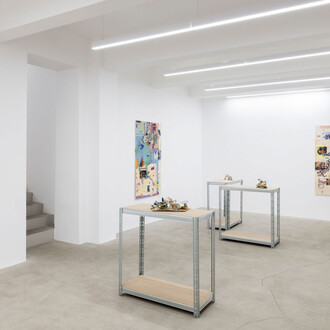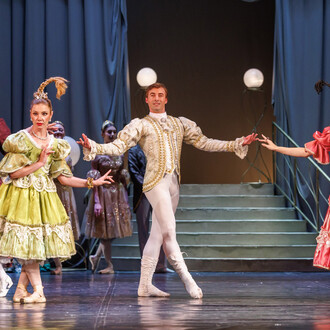On 29 October 2020 Avantgarden Gallery will reopen on the occasion of Acid Bleach, an exhibition of works (in collaboration with Lobo collective) by the Paris-based artist of Georgian origin Alexandre Bavard aka Mosa and a performance in collaboration with the Lobo Collective. Educated at the École nationale supérieure des beaux-arts of Lyon, Alexandre Bavard can be seen as a playwright and performer simultaneously. His narratives transcend any specific medium and are fueled by repetition, movement, and flow.
The range of artworks on display includes informal paintings on bleached canvas, resin and concrete sculptures, videos and performances. In Alexander’s work, the exhibition set-up becomes a dystopian stage design, at times dark, while the gallery is transformed through the eyes of an explorer of the future. This way, common objects such as clothes, tyres, jerry cans, plastic containers of any kind, and toys, turn into symbols of the anthropocene and are rethought and revisited as remains for a neo-archaeology which the artist makes us witness of a priori.
It comes as no surprise that the now-historic Milanese gallery, which has always worked with artists that had a close relationship with street culture and underground, opts for an artist such as Bavard. Under the name of Mosa, Alexandre has a past as a writer. Not only. Bavard has recodified and given new life to the writing. The “Bulky” is a system of notation of the movement generated by the tag. This system responds to a primary desire to bring the tag into the exhibition space by transcending the reductive idea of a transposition of the street tag to the canvas by a process of intellectualization of street calligraphy and the resort to the dance. Where lettering or painting could be limited to the support of the canvas, the use of choreographed body language is an answer to the movement of contemporary urban art.
In the origin of the Bulky performance (see video links below), there is a desire to combine several mediums of expression based on an interaction between street calligraphy, dance and sound creation. This writing of the gesture is based on a dynamisation and appropriation of the Georgian alphabet, the region where the artist comes from.















